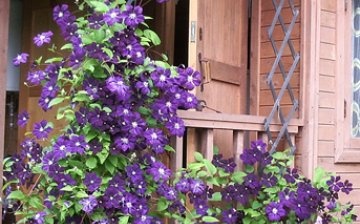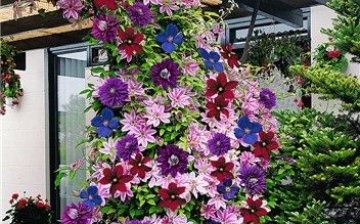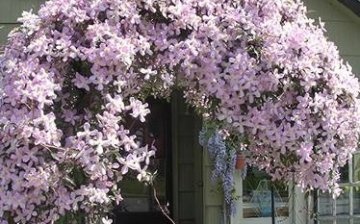Captured clematis - a photo of natural beauty
Clematis, whose photos can be found on the worldwide network, amaze with their diversity, colors and, of course, beauty. These are wonderful garden vines, some of which feel great even on covered and no balconies and terraces.
It is thanks to the numerous photographs that reveal clematis in all their glory that these vines are gaining more and more fans, but at the same time, many are disappointed to plant a vine in their garden, but not receiving the long-awaited abundant flowering.
You need to know for sure that the clematis, the photos of which attracted you, will be able to grow, bloom and feel good on your site. Moreover, you cannot buy clematis without knowing which pruning group the plant belongs to, since improper care of the vine will lead to the plant developing poorly or even dying.
- The first pruning group: clematis belonging to this group bloom in spring, but only on last year's shoots, so these clematis are either not pruned or lightly pruned, only after flowering, removing dried stems and wilted flowers. You should also rejuvenate the clematis of this group only once every few years - the branches of the vines are cut very low, to strong buds.
- The second group of pruning: this includes large-flowered hybrid vines, which also bloom only on last year's shoots. These vines should be cut off very early in the spring, before the vine started to grow, so that it remains from a meter to one and a half meters in height, to strong buds.
- The third group of pruning: it includes hybrid and species large-flowered clematis that bloom in the current year of the shoots. Accordingly, these are the easiest clematis to care for, they should be cut off early in the spring, before the vines begin to grow, so that forty centimeters remain to ground level to strong buds.
Clematis must be taken care of: during the cut and attached to the supports, mulch, water, in too dry weather, feed, in too cold regions to cover for the winter.










